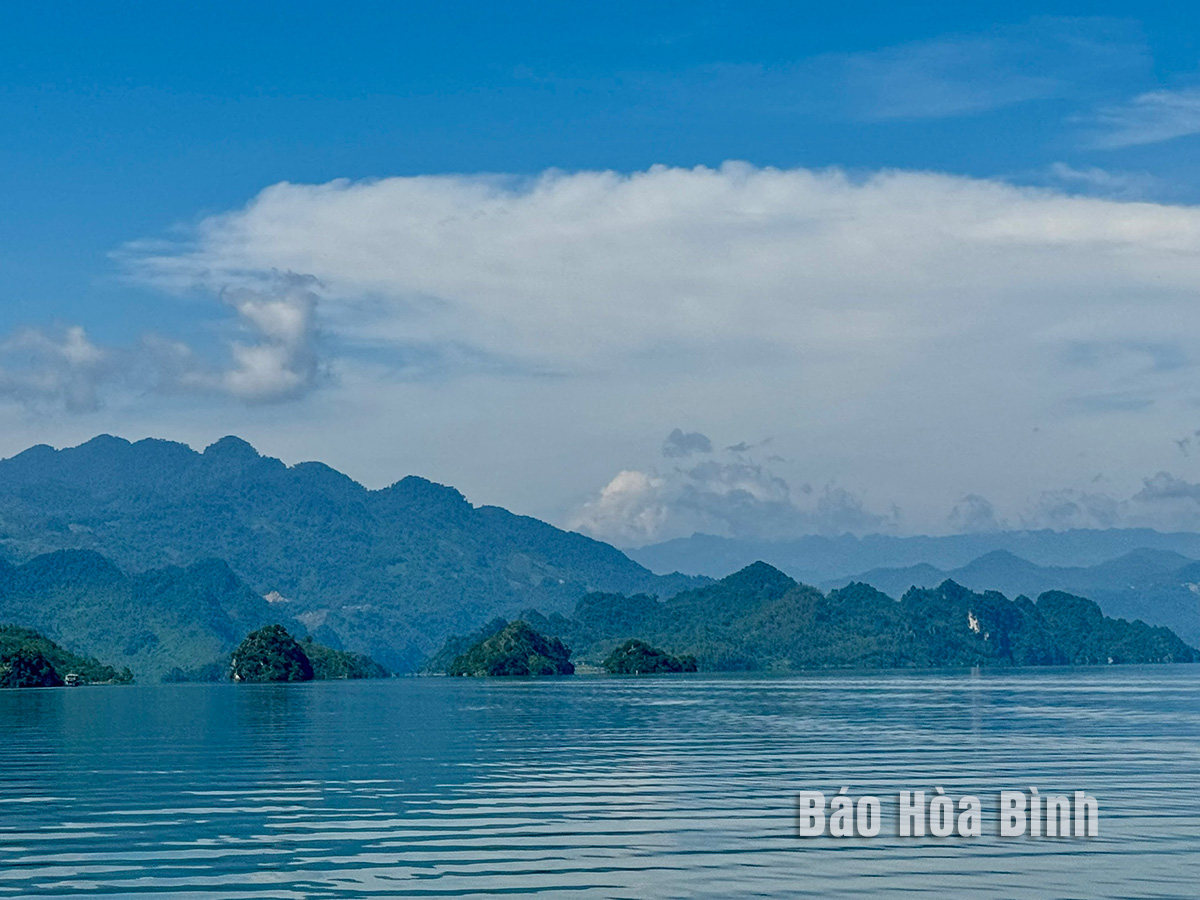



A view of the Hoa Binh Lake tourism area.
Spanning across the districts of Da Bac, Tan Lac, Cao Phong, Mai Chau, and Hoa Binh city, the lake is often referred to as the "Halong Bay" of the mountains. It boasts a breathtaking landscape with harmonious scenes of rolling mountain ranges and hundreds of large and small islands that dot the clear, blue waters.
The area is home to several historical, spiritual and cultural sites, such as the Ba Chua Thac Bo temple, Thac Bo cave, Hoa Tien cave, and Ngoc and Dua islands. In addition, there are villages of local ethnic groups imbued with their traditional lifestyles. For example, exploring the Muong Ao Ta community in Da Bia, Tien Phong commune, Da Bac district, visitors can try hiking up Da Bia Mount, kayaking, swimming, enjoying cultural performances, and stay overnight in stilt houses of the Muong ethnic people.
The Hoa Binh Lake tourism area offers diverse options, with dozens of programmes catering to both domestic and international tourists. These range from short day trips to multi-day journeys that explore community-based tourism sites in ethnic villages such as Mo in Binh Thanh commune, Tien in Thung Nai, and Ngoi in Suoi Hoa, among others. Additionally, there are luxurious retreats along the lake, like the Mai Chau Hideaway, Ba Khan Village Resort, Maida Lodge, Mo Village, Xoan Retreat, Vayang Retreat, and Hien Luong Eco.
Bui Xuan Truong, Deputy Director of the provincial Department of Culture, Sports, and Tourism, highlighted the development of the area, saying it has attracted investments from major corporations and businesses, leading to high-quality hotels, resorts, and recreational facilities. Each location within the tourism area retains a unique character, enriched by the cultural heritage of local ethnic groups.